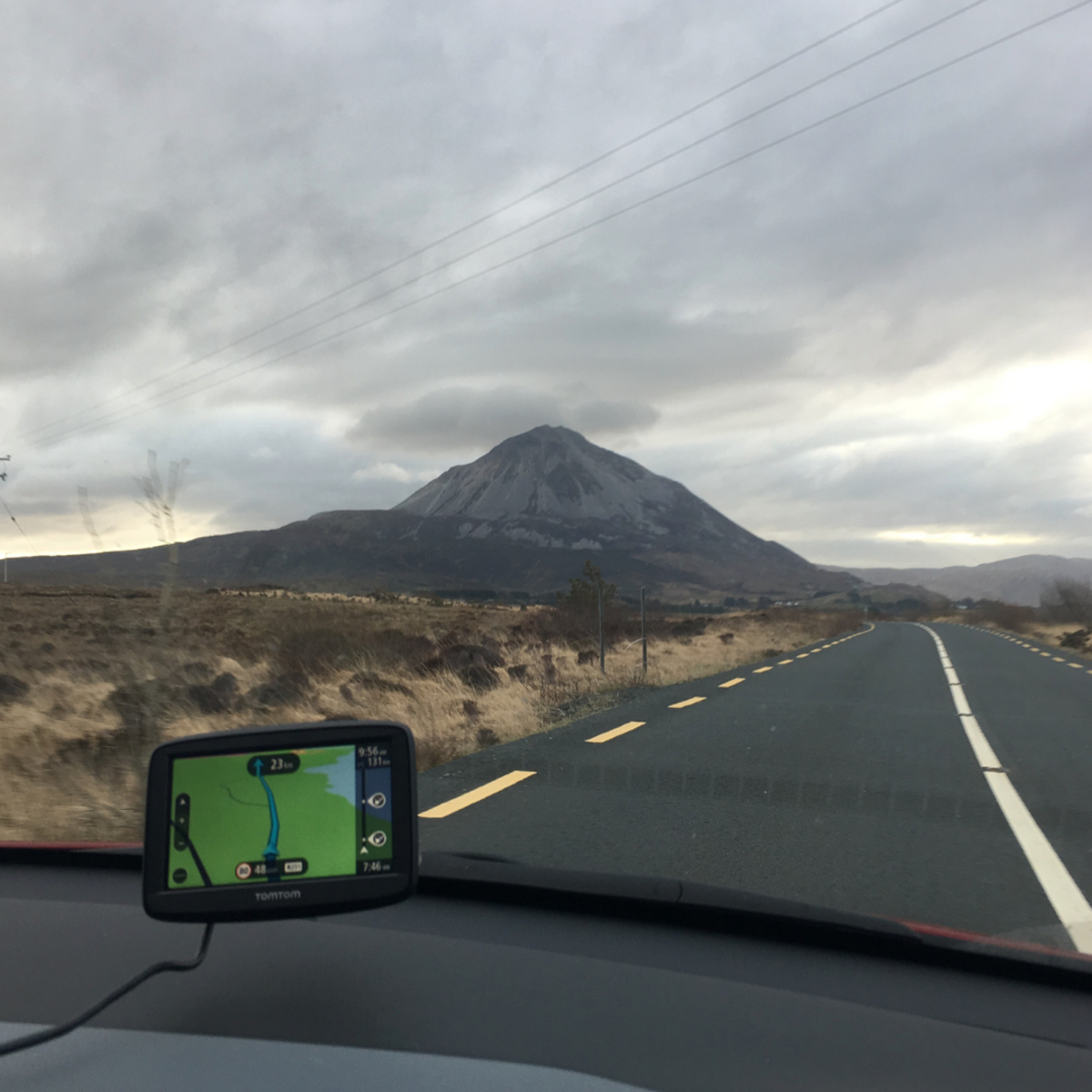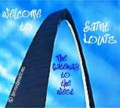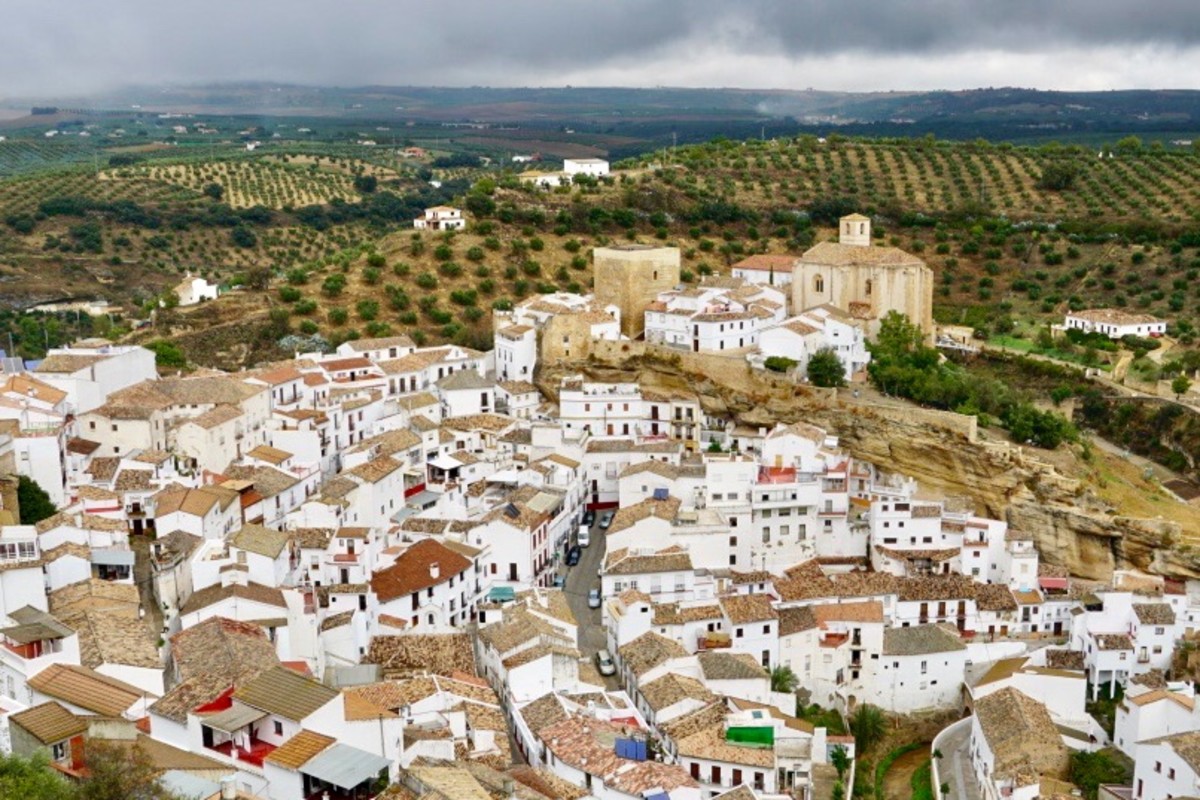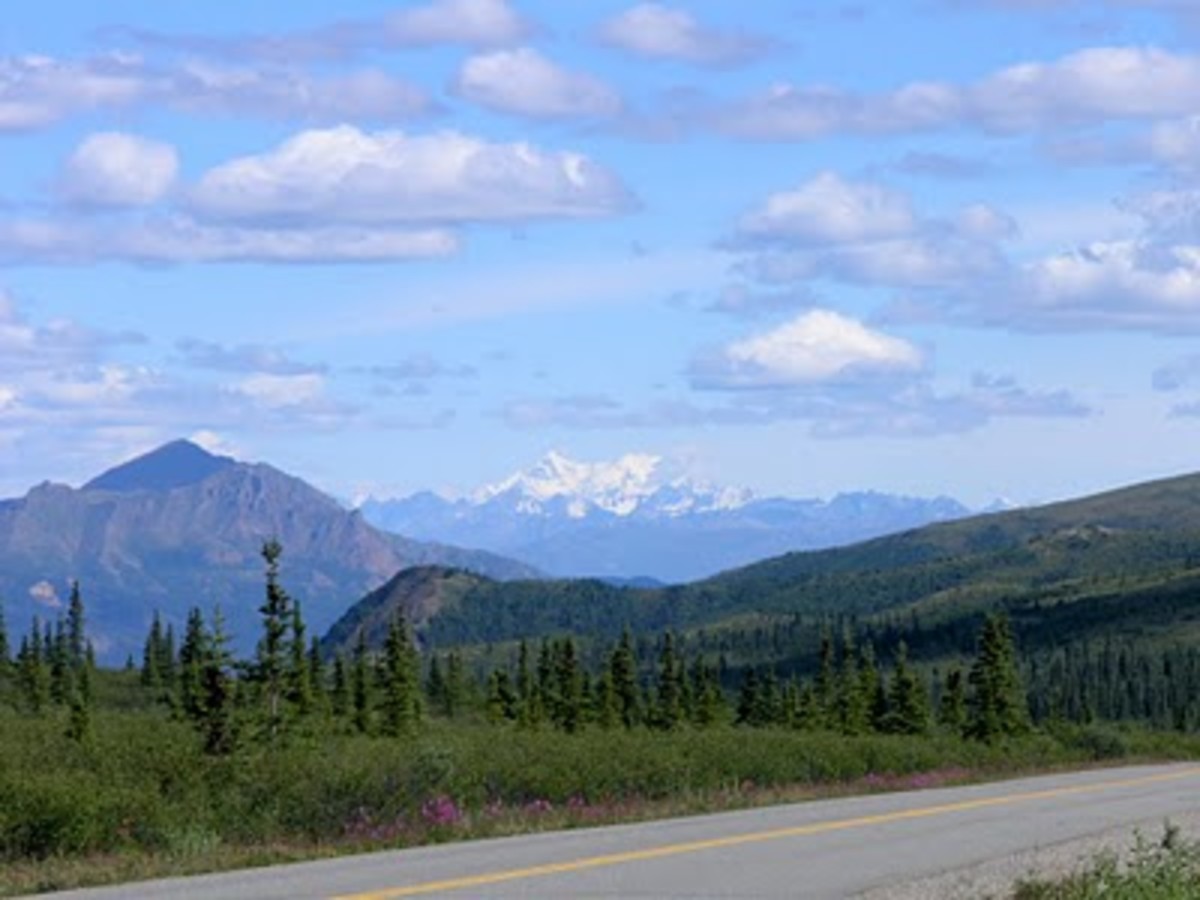That can't be Stonehenge ... I didn't know that was in Winchester: One day in the English Countryside.
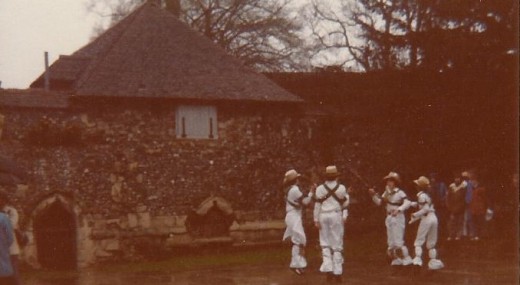
That Can't Be Stonehenge
I disembarked from the legendary ship, the QE2, in Southampton, England, and had one day on land before rejoining the ship for a cruise to Scandinavia. My travel companion and I decided we would spend this one day driving the 30 miles from Southampton to Stonehenge. Neither of us could be that close to Stonehenge and not make the pilgrimage there.
Although I don't remember the first time I heard of Stonehenge, it must have been as a small child because it seems I've known about it my whole life. Ancient people in long dark hooded robes walking slowly under the white light of a full moon among mammoth, inexplicably positioned stones; that was always the first image that came to my mind when I heard the word Stonehenge. Spring equinox ceremonies, human sacrifices, even aliens visiting when Earth was new; all these myths about Stonehenge, and a hundred more, add to the folklore. Unfortunately, although the major axis of the monument always pointed to the rising sun at mid-summer, and other parts of the monument may have had astrological meaning, Stonehenge is too ruined for any theories to be proved.
Our rental car was waiting for us at the pier. After a few minutes of serious discussion about who would drive this rental car since in England it had to be driven on the "wrong" side of the road and the steering wheel sat there on the passenger side of the car daring us to take a chance, I climbed in behind the steering wheel determined to give it a go. After driving ten or twelve blocks my driving instincts took over and we headed down the A36.
It was a gray, rainy day and the small windshield wipers were having a hard time keeping the windshield clear. We were driving on a two lane highway edged by the green, lush, English countryside. My travel companion was watching for the exit sign when up ahead in the distance I saw a large, dense mass of something but disregarded the notion that it was Stonehenge because it was too close to the highway.
I had always imagined the approach to Stonehenge would be down a long dirt road into a wooded area that opened into a remote clearing. Stonehenge certainly would not be parked next to a highway like a fast food stop.
Regardless of my indignation, the next exit sign read "Stonehenge" and sure enough, there it sat in a field beside the highway.

Is that Merlin?
The exit wrapped around and under the highway before ending in the parking lot of a one story contemporary building. At this point I was tempted to just sit in the car and pout, my childhood illusions about how Stonehenge would look were crushed. However, my travel companion would not encourage my brooding and coaxed me out of the car and down the dirt path that led to the open field and Stonehenge.
Standing there looking at the ancient structure with my back to the highway I felt better. A rope encircled the perimeter of the stones blocking anyone from walking among them. When I asked the woman with the official Stonehenge blazer and badge why we could not walk closer to the stones she said very indignantly, "You Americans, you come over here and chip off pieces of the stones for souvenirs, we can't allow that." While I was a bit unnerved at Americans being singled out as the defacers of the monument, I certainly understood the importance of preserving the stones and quickly hushed the little devil in me that marveled at what a great souvenir that would be.
Just then, the steady dripping of rain stopped, the gray sky began to clear and a pink ribbon of light burst from the horizon. With the brighter light, fog began to rise up from the ground and tree tops of the forest behind the stones. At any moment I expected to see Merlin walk out of the forest into the mist.
After such a bumpy start, I was reluctant to leave Stonehenge. Regardless of its proximity to the highway, sitting on the damp lawn that quiet afternoon, I could imagine the extraordinary sacred history there.
(For more information on Stonehenge see the Wikipedia link below.)
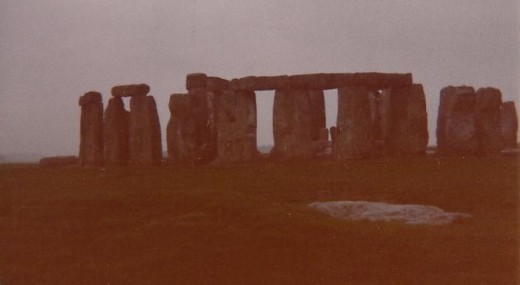
Winchester: An ancestor, a table and a ticket
Our intentions were to return to Southampton after Stonehenge, but as we sped down the highway that late afternoon, I saw the exit sign for Winchester and spontaneously decided to visit there. To be perfectly honest, my motivation for visiting Winchester was the 1966 Grammy winning song, Winchester Cathedral. Ah, but Winchester turned out to be so much more.
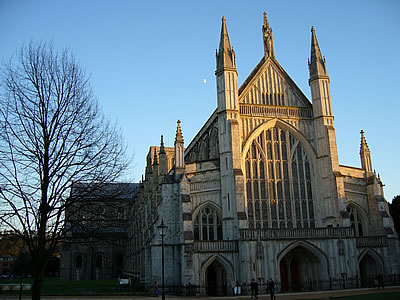
The cobblestone street in front of the village green extended in both directions, leading to blocks of stone storefronts housing shops, book stores and tea cafes. Dancers dressed in traditional costumes were just finishing their afternoon program by the time we found a parking space and walked to the park. Directly behind the village green Winchester Cathedral towered overhead.
The current cathedral is actually a second version of a cathedral built in 642 and called The Minster. The Minster housed the crypts of Saxon Kings and was built a short distance north of the present building. Construction of today's Winchester Cathedral began in 1079 and continued into the 16th Century. Throughout the centuries English royalty and dignitaries have been buried under the slate floors of the cathedral, including the remains of the Saxon Kings that were reburied there. Perhaps the most famous burial site inside the cathedral is that of Jane Austin.
The Cathedral has a major water problem. The Normans had built it on a great raft of logs laid on bogland and by 1900 the Cathedral was sinking. In 1905 to 1912 the building was saved from total collapse when waterlogged foundations were reinforced by a diver named William Walter. Surprisingly, he worked in depths of up to 20 feet of water.
The Ancestor
The day I visited Winchester Cathedral all was quiet. It was late in the day and most tourists had left the small town. The sun would shine intermittently, causing the dripping rain drops to sparkle like prisms on the newly green lawn and budding shrubs surrounding the cathedral. We were surprised to find the massive doors wide open and gingerly walked into the huge naive. As far as we could tell, we were alone.
I had not taken ten steps along the long center aisle when I looked down and read the name engraved on the burial stone at my feet. It was my paternal family name. I had to look more than once to be sure I wasn't imagining it. A possible ancestor of mine buried in such august company?
With the haunting words "You Americans ..." from the Stonehenge guardian echoing in my head, I took out my camera and, ignoring the posted signs ordering that no pictures be taken inside the cathedral, I snapped an image of that burial stone. I rationalized my actions by telling myself I had to have a photo to show to my dad.
When I got home I followed up with Winchester Cathedral staff to see if I could find some history on my possible ancestor. He was a Dean of Winchester Cathedral from 1729-1739 and died at the early age of 47.
(For more information on Winchester Cathedral, see the Wikipedia link below.)
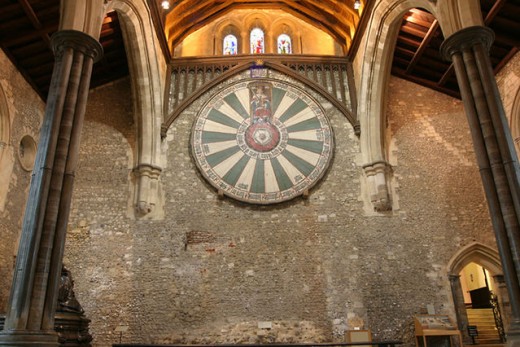
The Table
The sky had clouded over when we left Winchester Cathedral. Most of the shops were closed. Nevertheless we wandered down a nearby street. My travel companion stopped to look in a storefront and I walked further down the cobblestone roadway. An open door on my left caught my attention and breaking every travel safety rule I cautiously walked into the huge, dark room. The room was empty and I walked forward, again ignoring travel safety. Astonishingly, a large, round table hanging on the wall ahead of me slowly came into view as my eyes adjusted to the dark room. I felt like I had discovered King Arthur's Round Table all by myself. It was such a personal thrill because I am a great fan of the Camelot legend and had no idea that Winchester is the home of this mythical piece of furniture.
I had actually stumbled upon the Great Hall which was built between 1222 and 1235. The Round Table has hung in the Hall since 1463. Dating has placed the Table at 1275 which proves it is not contemporary to King Arthur. However, the names of the Knights of the Round Table are written around the edge of the Table with King Arthur on a thrown at the top.
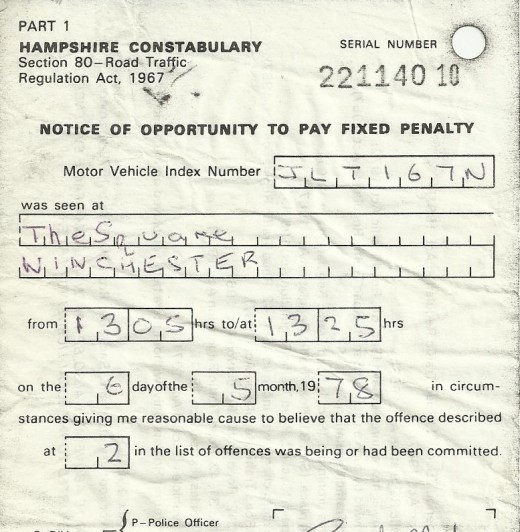
The Ticket
I called for my travel companion to join me in the Great Hall to view the Round Table and then we decided it was time to leave Winchester and find our way back to Southampton. We were both exhausted and had to get up early the next morning to rejoin the QE2.
As soon as we turned the corner I could see something white stuck under the windshield wiper of our rental car. My first thought was that it was a "welcome tourist" type of packet. In reality it turned out to be quite the opposite, it was a parking ticket neatly stuffed into a clear plastic bag so it wouldn't get wet. In big letters at the top of the ticket it read, "Notice of Opportunity to Pay Fixed Penalty." I decided to decline the opportunity and keep the ticket as a souvenir.
I could hear that woman from Stonehenge talking in my ear, "You Americans ..."


